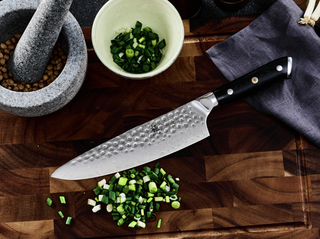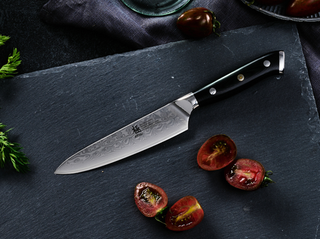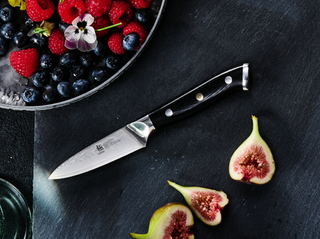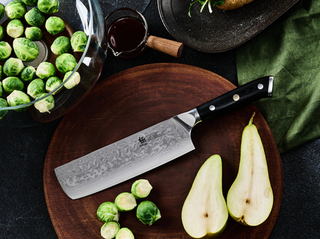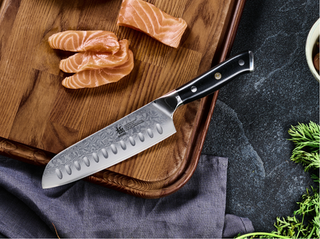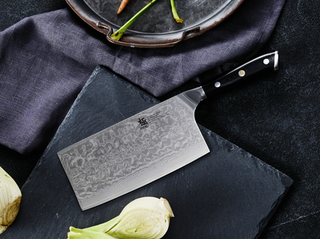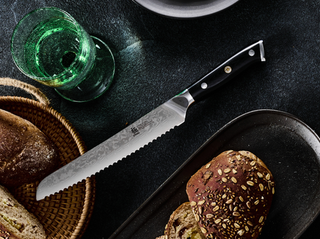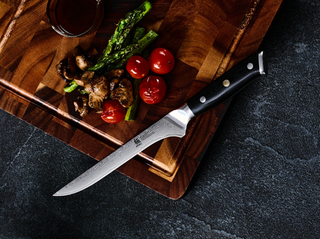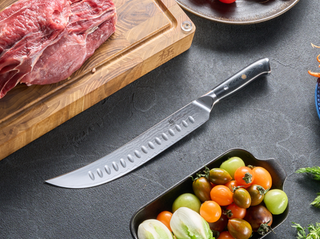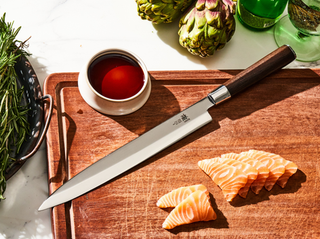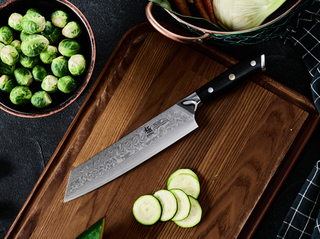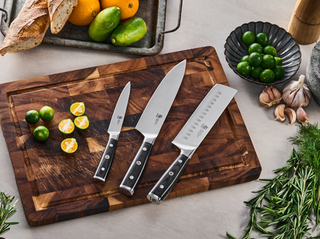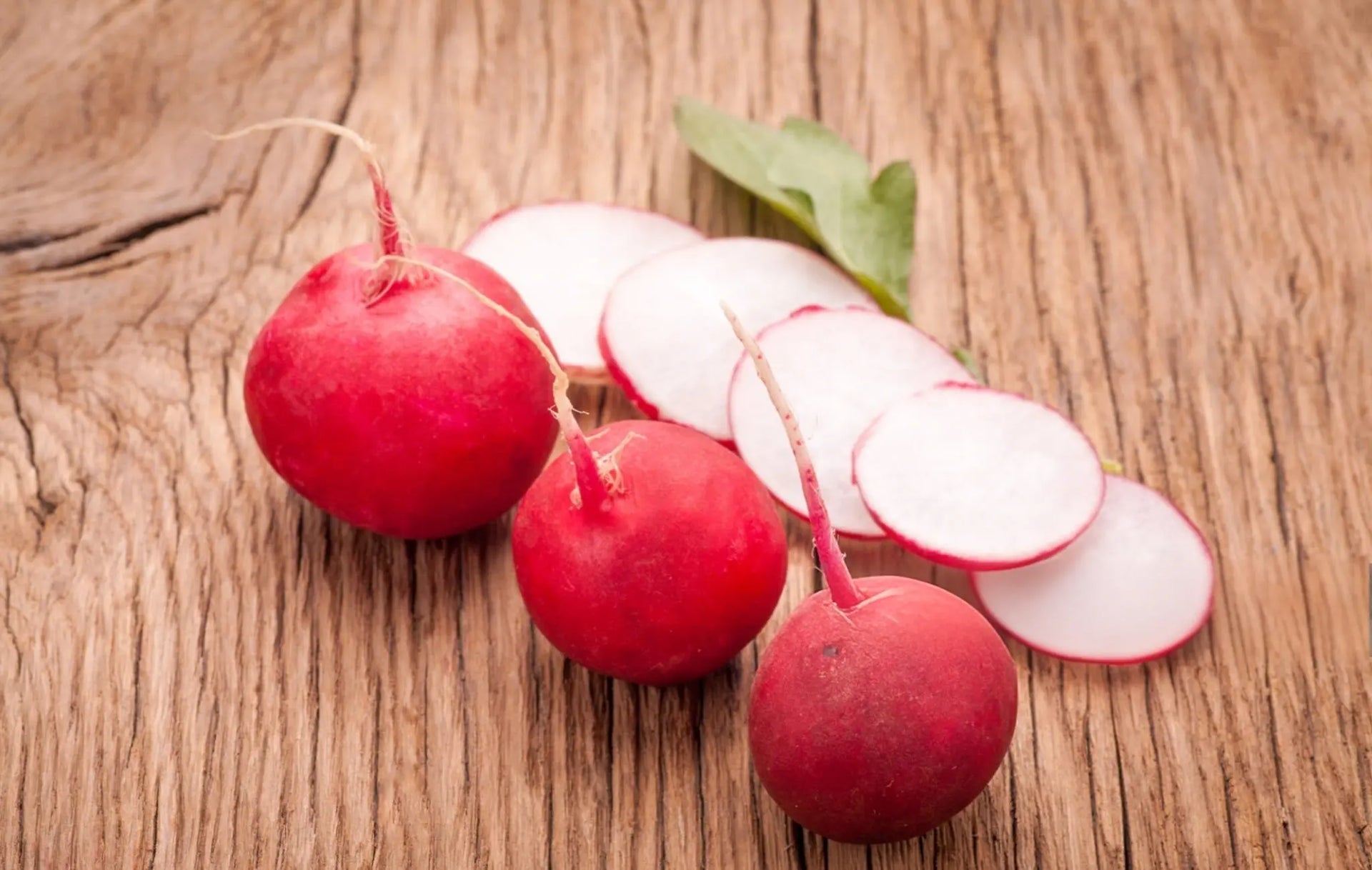Most of us just slice and toss radishes into salads, but how you cut radishes actually matters more than you’d think. These deceptively simple veggies pack 30% of your daily vitamin C in a single serving, along with gut-friendly fiber that most folks miss out on. Get the knife skills right, and that peppery crunch transforms from salad filler to taco superstar – or even next-level pickled garnish.
Let's dive into the simple techniques that'll have you slicing radishes like a pro.
Why Bother with Different Radish Cuts?

Those thin radish slices you see in fancy restaurants aren't just for show.
Thinner cuts release more of that distinctive peppery flavor, while thicker slices give you a satisfying crunch. When you toss thinly sliced radishes in a salad, they absorb dressing better and distribute flavor throughout the dish.
And let's be honest – beautifully cut vegetables make any dish look more appetizing. Why not impress your dinner guests with a little knife skill?
Quick Prep Before You Start Slicing

Before we get to the cutting techniques, let's set yourself up for success:
-
Give your radishes a good rinse under cold water – they grow in soil, after all.
-
Trim off the root end and the leafy tops (don't toss those greens – they make a delicious pesto).
-
Pat them dry so they don't slip while cutting.
-
Grab a sharp knife and a stable cutting board.
Speaking of knives, I've found that my Japanese Santoku knife makes radish-cutting almost effortless. Its thin, sharp blade slices through crisp vegetables with minimal pressure, giving you cleaner cuts with less effort. If you do a lot of vegetable prep, it's worth considering one for your kitchen.
Method 1: Classic Round Slices

This is the go-to method for salads, sandwiches, and beautiful garnishes. Simple doesn't mean boring!
Here's how to do it:
-
Place the radish on its side on your cutting board.
-
Hold it steady with your non-dominant hand, keeping fingertips curled back for safety.
-
Slice across the radish to create rounds about 1/8 to 1/4 inch thick.
-
Continue slicing until you reach the end.
The secret to even slices? Keep your knife motion smooth and consistent. These rounds are perfectly scattered over a green salad or layered on buttered bread for a classic French snack.
Method 2: Matchstick (Julienne) Cuts

Want to add some elegance to your dishes? Julienned radishes add beautiful texture to slaws and make impressive garnishes for soups and entrées.
Follow these steps:
-
Start by slicing the radish into thin rounds.
-
Stack 3-4 rounds together for stability.
-
Cut across the stack to create thin strips (about 1/8 inch wide).
-
Separate the strips gently with your fingers.
These delicate matchsticks might look fancy, but they're surprisingly simple to create. They're perfect for adding crunch to tacos or brightening up a stir-fry at the last minute.
Method 3: Diced Radishes

Need even pieces that distribute perfectly throughout a dish? Diced radishes are your answer for salsas, grain salads, or anywhere you want consistent bites.
Here's the technique:
-
Cut the radish in half lengthwise.
-
Place the flat sides down on your cutting board (this stability is key).
-
Make lengthwise cuts about 1/4 inch apart.
-
Rotate 90 degrees and cut crosswise to create small cubes.
The uniform size ensures even distribution and consistent flavor in every bite. Try adding diced radishes to your next potato salad for a peppery surprise.
Method 4: Radish Wedges

Looking for substantial crunch and dipping power? Wedges are your friend – they're sturdy enough for dips but still showcase that beautiful radish color.
Creating wedges is simple:
-
Trim the tops and bottoms of the radish.
-
Cut the radish in half from top to bottom.
-
Place each half flat-side down and cut into 3-4 wedges, depending on size.
These wedges are perfect for crudité platters or quick-pickling. The extra surface area makes them ideal for scooping up dips without breaking.
Method 5: Radish Roses (When You Want to Impress)

Ready to show off a bit? Radish roses aren't just for fancy restaurants – you can make them at home with a little practice.
Try this decorative technique:
-
Choose larger, round radishes for easier handling.
-
Trim the root end flat so the radish can stand upright.
-
Make several vertical cuts from the top down, stopping about 1/4 inch from the bottom.
-
Create more "petals" by making additional cuts between existing ones.
-
Soak in ice water for 30 minutes – watch as the "petals" gradually open up!
These little beauties make any dish Instagram-worthy. I like to place them around the edge of a salad platter or float them in a clear soup for dramatic effect.
Different Radishes Need Different Approaches
Here's how to handle the various types you might encounter:
Regular Red Radishes: The techniques above work perfectly for these common round varieties.
Daikon/White Radishes: These giants need to be cut into manageable sections first. I usually cut them into 2-3 inch segments before applying any of the methods above.
Watermelon Radishes: Show off their stunning pink centers by slicing them into thin rounds. A super-sharp knife (my Santoku is perfect here) gives you the cleanest cuts to highlight their natural beauty.
French Breakfast Radishes: Their elongated shape makes them perfect for bias cuts – slice them at an angle for elegant ovals that look great on a plate.
When Radishes Don't Cooperate
Radishes can be slippery little things. If they're sliding around while you're trying to cut them:
-
Create a flat side first by cutting the radish in half
-
Use a kitchen towel for extra grip
-
Double-check that your cutting board isn't sliding on your counter
How to Keep Radish Crispy
Nothing's worse than soggy radishes. To keep them crisp after cutting:
-
Store them in cold water in the refrigerator for up to a day
-
For longer storage, keep them in an airtight container with a slightly damp paper towel
-
Whenever possible, cut radishes just before serving
How to Eat Radish
Now that you've mastered these cutting techniques, here are some delicious ways to use your radish creations:
-
The French Classic: Spread butter on good bread, top with radish rounds, and sprinkle with flaky salt
-
Quick Pickle: Soak julienned radishes in rice vinegar, sugar, and salt for a tangy topping
-
Roasted Revelation: Toss radish wedges with olive oil and roast at 425°F for 15 minutes – the heat transforms their flavor completely
-
Radish-Top Bonus: Don't waste those greens! Chop them up and add to salads or blend into pesto
Nutrition in Radish
Beyond adding color and crunch, radishes are nutritional powerhouses.
They're low in calories but packed with vitamin C for immune support. Their natural compounds also promote digestion and liver health.
For maximum nutrition, enjoy them raw – but if the peppery bite is too strong, a light cooking mellows the flavor while preserving most nutrients.
Your Radish Questions, Answered
"Do I need to peel radishes before cutting them?"
Nope! Just wash them thoroughly. The skin contains much of the color and nutrients. The only exception is very large daikon radishes, which sometimes have tough outer layers.
"Why are my radishes sometimes too spicy to enjoy?"
Radishes develop more heat when they're stressed during growing (especially with inconsistent watering). If yours are too pungent, soak the cut pieces in ice water for about 30 minutes to mellow the bite.
"What knife works best for radish cutting?"
While any sharp knife works, I've found my Japanese Santoku knife gives the cleanest cuts. Its thin blade slices through crisp vegetables with minimal pressure, preserving the radish's structure without crushing it. The blade's flat profile also makes it easier to create consistent slices.

"Can I use the radish greens, or should I toss them?"
Definitely use them! Young, fresh radish greens are perfectly edible and nutritious. Just wash thoroughly (they can trap soil) and use like any other tender green – in salads, sautés, or even pesto.
Conclusion
With these five cutting methods in your culinary toolkit, you've graduated from basic radish prep to professional-level techniques. Whether you're making a simple salad or an impressive appetizer platter, knowing how to cut radishes properly will elevate your dishes.
The key to perfect cuts is a sharp knife (I reach for my Santoku for nearly all vegetable prep) and a little practice. Soon you'll be slicing through radishes with confidence and creativity.
For more veggie prep tips, check out our guides on how to prepare bok choy and choosing kitchen knives that won't kill your wrists.
